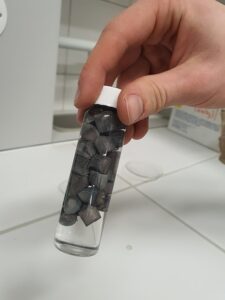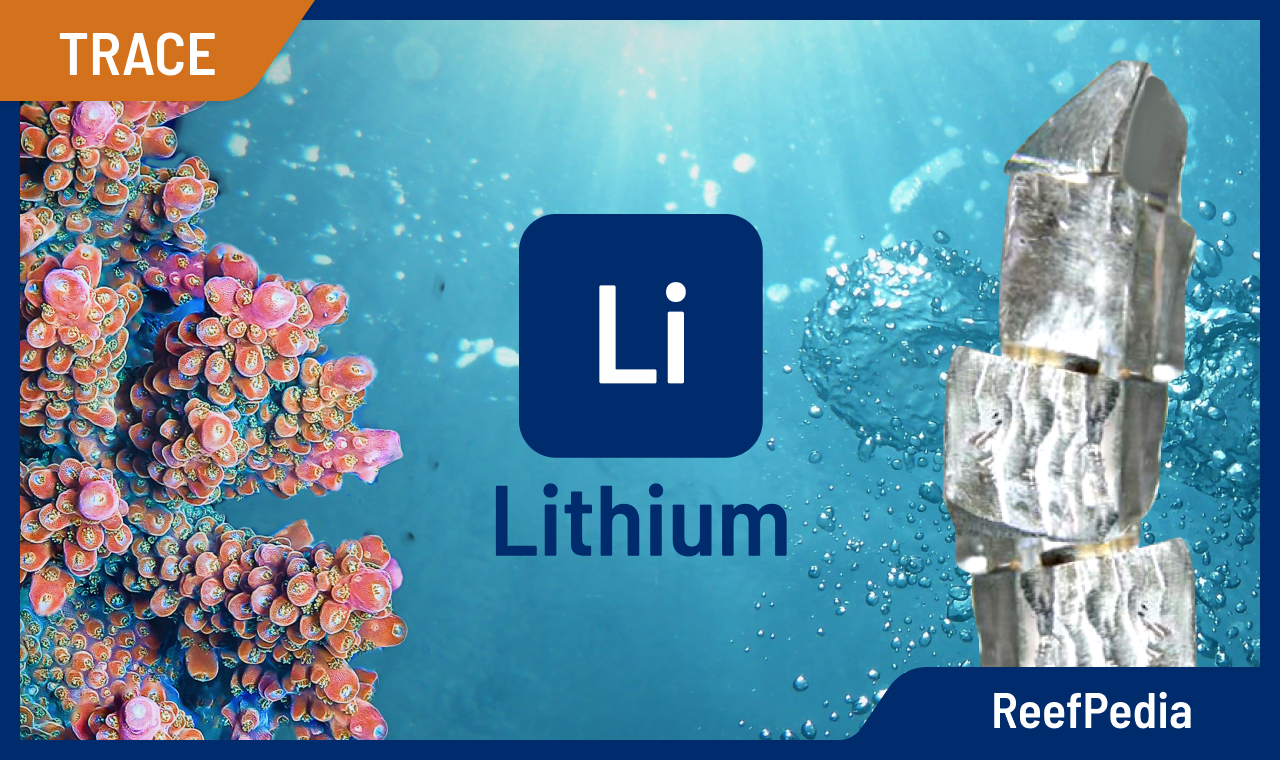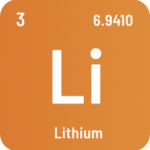 What is LITHIUM (Li)?
What is LITHIUM (Li)?
Lithium (Li, Latin: lithium) – a chemical element from the first group of the periodic table of elements known as lithium*.
Lithium is the lightest, soft, silver-white metal. Like most elements of the first group of the periodic table such as sodium (Na) or potassium (K), it is so reactive that it does not occur in nature in the free state. There are known chemical compounds containing lithium in their structure such as lithium chloride (LiCl), lithium hydroxide (LiOH) and lithium sulfate (VI) ( Li2SO4). Lithium is also found in magmatic rocks and seawater.
Due to its reactivity, it reacts very violently with water to form lithium hydroxide, according to the reaction below (1).
2Li + H2O → 2LiOH (1)
Lithium is present in living organisms as well as in seawater itself. Its content in a marine aquarium should be about 180 μg/L. It belongs to the group of micronutrients necessary for the proper development of animals in a marine tank. Much of the lithium ions (Li+) found in natural seawater come from rocks from the weathering of continents.
Importance of lithium in seawater
Although the effects of lithium on the functioning of marine organisms have not been thoroughly studied at this point, it is regularly consumed by marine animals, so it is important to keep its levels within the recommended range.
Observations show that it is necessary for the proper conduct of metabolic processes and for the building of skeletons and tissues by corals.
The roles of lithium
 Biological processes (coral skeletal growth)
Biological processes (coral skeletal growth)
Scientific studies suggest that lithium is essential for the building of skeletons by corals. Scientists also suggest that lithium significantly tends to build the skeleton of corals in both calcite and aragonite.
Chemically speaking, calcium carbonate (CaCO3), which is the main compound responsible for skeletal structure, can occur in nature in two polymorphic forms; (the phenomenon of one chemical occurring in more than one configuration of an elemental cell is known as polymorphism.) calcite and aragonite.
Biological processes (metabolic processes)
Lithium is essential for normal metabolic processes, and one of the earliest known mechanisms of lithium action is membrane transport of ions.
Problems associated with excess or deficiency of lithium in seawater
Although the mechanisms of lithium’s influence on marine organisms are not fully understood, it is known that lithium is essential for the proper functioning of marine organisms. This element is regularly consumed by animals, so it is necessary to keep its levels within the recommended range.
Low concentrations of lithium inhibit skeletal growth in corals and destabilise metabolic processes, among other proteins. We recommend increasing doses of fluids that contain lithium.
Exact data on the damage caused by too high levels of this element are unknown, but for the safety of the animals it should be kept within the recommended range. The most common causes of exceeding recommended lithium levels: cement, ceramics, excessive doses of dosed fluids, salt. Find and eliminate the cause of the problem and lower the value of this parameter in the water.Perform up to 6 water changes. It is recommended to replace about 15% of the volume of aquarium water during each change until the recommended value of this parameter is reached. The water prepared for the change must be characterised by the appropriate level of target salinity. Use salts with the correct parameters and composition suitable for the ICP test.
You can also use available adsorbers on the market, mainly cation exchange resin.
How to protect the aquarium?
Check the lithium content regularly and keep it at the right level. We recommend that you keep lithium at 160-200 μg/L with the optimal value we recommend being 180 μg/L. This level of lithium in seawater ensures healthy and beautiful coloration for your animals.
The most accurate and reliable method for determining lithium is ICP-OES analysis. The Inductively Coupled Plasma Optical Emission Spectrometry (ICP-OES) technique is the most accurate analytical method for analysing the elemental composition of seawater.
Indicators of abnormal lithium levels in marine aquariums
Coral species are not known to be particularly sensitive to changes in lithium levels in seawater. It is observed both with an excess and a deficiency of this element inferiority of animals
Inadequacy:
- decrease in skeletal hardness
Recommendations
In order to ensure adequate lithium levels in your aquarium, you should systematically test lithium and make sure it is at the right level.
If the lithium level is above 200 µg/l, we are talking about an overdose. The most common causes of exceeding the recommended level of lithium: improperly prepared salt, contaminated supplements, excessive doses of administered fluids, poor quality rock. Find and eliminate the cause of the problem and lower the value of this parameter in the water. Perform up to 6 water changes. It is recommended to change about 15% of the volume of aquarium water during each change until the recommended value of this parameter is reached. The water prepared for the change must be characterised by the appropriate level of target salinity. Use salt with the correct parameters and composition suitable for the ICP test.
In case of overdosing or suspected presence of organic lithium compounds in too high a concentration, they can be removed from the water with ion exchange resin and adsorbers based on manganese oxide and others.
*The name lithium comes from the name of the first element placed at the top of the first column of the periodic table (Li-lithium).
About author

Magdalena Metzler
Privately, I am a mother and a lover of nature and sport. My main interest is quantum chemistry, which hides a whole lot of unsolved mysteries and connections, which is extremely exciting from a scientific point of view.
In my scientific career, I have conducted international projects focused on innovative solutions for many branches of business, e.g. automotive, construction, and now, of course, marine aquaristics.
Working at Reef Factory gave me a passion for marine aquaristics, which I can develop every day, building a chemistry department and creating products that will help aquarists take care of tanks and ensure the highest safety of animals.
One of the most exciting memories of working at Reef Factory is the commissioning of the ICP-OES spectrometer, which analyzes the elemental composition of seawater. The method of analysis in ICP is based on an analytical technique, which is a combination of my passion for quantum chemistry and marine aquaristics.
I hope you find my articles on ReefPedia interesting and helpful! Happy reading :))
Magda


 What is LITHIUM (Li)?
What is LITHIUM (Li)?